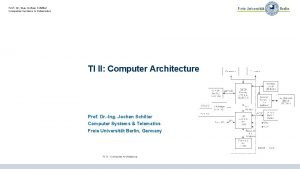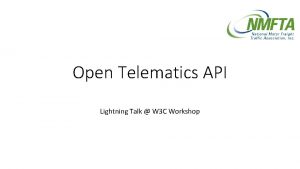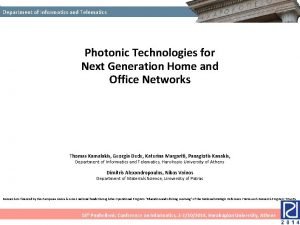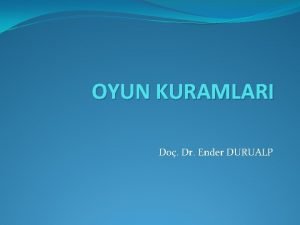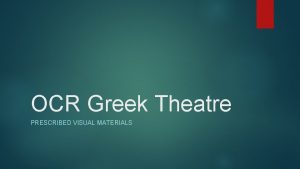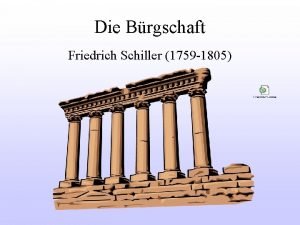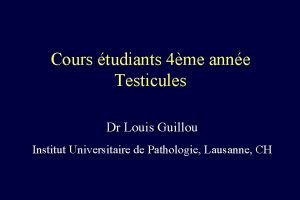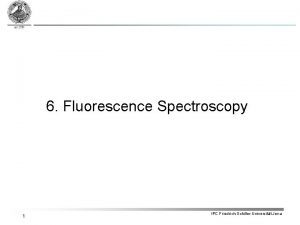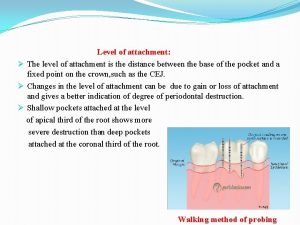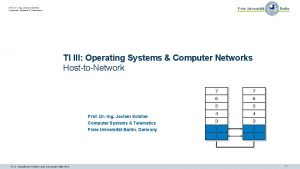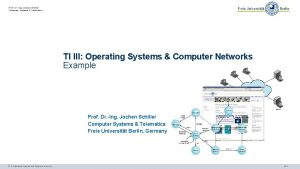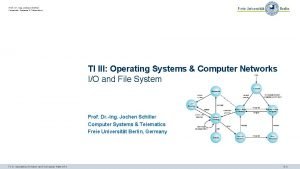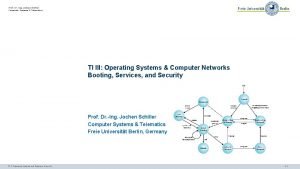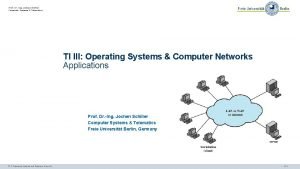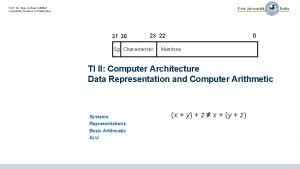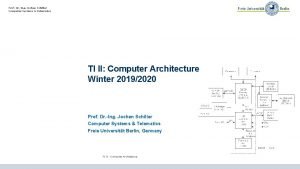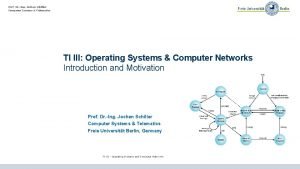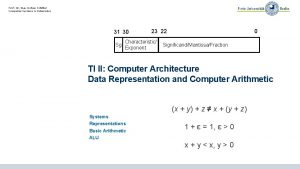Prof Dr Ing Jochen Schiller Computer Systems Telematics










- Slides: 10

Prof. Dr. -Ing. Jochen Schiller Computer Systems & Telematics TI II: Computer Architecture Prof. Dr. -Ing. Jochen Schiller Computer Systems & Telematics Freie Universität Berlin, Germany TI II - Computer Architecture

Structure/content of CST-Lectures Modeling and Simulation Modeling, Simulation and Evaluation of Systems SW/HW-Lab mobile, embedded Systems Embedded Internet and the Io. T SDR, security architectures, Io. T, localization, bring your own topic… Wireless sensor networks, wireless mesh networks, Internet of Things, etc. Microprocessor Lab Seminar Computer Systems Mobile Communications Programming of embedded systems, Io. T, mobile/wireless devices Presentation & discussion of current topics from all lectures Wireless transmission, media access, GSM, 3 G, LTE, WLAN, mobile IP, ad-hoc networks Telematics / Advanced Computer Networks Protocols, services, standards, LAN, Internet, TCP/IP, WWW, security, quality of service, DNS, routing, applications, IPv 6, MPLS Master Bachelor Computer Systems Lab (TI IV) Embedded systems, interfaces, drivers, operating systems, networking, integration Operating Systems and Computer Networks (TI III) Input/output, DMA/PIO, interrupts, buffer, process/thread, UNIX/Windows, networks, media access, protocols, TCP/IP, Internet You are here! Computer Architecture (TI II) Harvard/v. Neumann, micro architecture, RISC/CISC, branch prediction, pipelining, cache, memory hierarchy, assembler, multi-processor systems Module Computer Architecture, Operating Systems and Computer Networks Basics of Computer Systems (TI I) Boolean algebra, circuits, minimization, gates, memory, semiconductors, transistors, CMOS, AD/DA conversion TI II - Computer Architecture 0. 2

Content 1. Introduction - Single Processor Systems Historical overview Six-level computer architecture 2. Data representation and Computer arithmetic - Data and number representation Basic arithmetic 3. Microarchitecture - Microprocessor architecture Microprogramming Pipelining TI II - Computer Architecture 4. Instruction Set Architecture - CISC vs. RISC Data types, Addressing, Instructions Assembler 5. Memories - Hierarchy, Types Physical & Virtual Memory Segmentation & Paging Caches in g in m m r as a r rog mble e P Ø asse f th o s t r pa rcise exe 0. 3

Topics of this Course Have you ever … - opened the case of a computer? - assembled a computer from components? - written a program in Java/Python/Rust/Java. Script? - written a program in C? - written a program in Assembler? TI II - Computer Architecture 0. 4

Topics of this Course At the end of this course, you should … - know the different components of a computer system - know the internals of a computer - know how a computer stores data, i. e. , text, audio, video - know how a program is executed - be able to write small assembler programs - understand basic arithmetic https: //de. ifixit. com/Teardown/i. Phone+8+Teardown/97481 This should help you to - understand computers in general - understand how high-level programming languages are translated into machine language - improve your programming skills - optimize the performance of your programs TI II - Computer Architecture 0. 5

Literature The course follows (roughly) the books: - A. S. Tanenbaum, T. Austin: Structured Computer Organization, 6. edition, Pearson, 2013 Rechnerarchitektur, 6. Auflage, Pearson Studium, 2014 - D. A. Patterson, J. L. Hennesy: Computer Organization and Design, 5. edition, Morgan Kaufmann, 2013 Rechnerorganisation und -entwurf, 5. Auflage, De Gruyter, 2016 TI II - Computer Architecture 0. 6

Course Organization General: via s – l a u irt eeting v Q&Abex m in real We orials tut ! life Lecture - Available online - Flipped-classroom: Q&A, discussions, Friday, 8: 30 -10 h, via Webex (invitations see KVV) Office Hours - Jochen Schiller: via email or https: //fu-berlin. webex. com/meet/jochen. schiller - Tutors: during tutorials News and Updates - KVV course site (via announcements) Tutorials - Groups of approx. 25 -30 students - Time depends on group - Registration via KVV TI II - Computer Architecture Assignments: New assignments each week - Available in KVV Discussion - During the tutorials Practical assignments - @home and in the labs, should work on all platforms - More during Q&A/tutorials Handing in ØRight on time! - Complete electronic workflow! - Solutions handed in too late will be ignored! 0. 7

Assignments ns tio es Qu hi is bl Pu TI II - Computer Architecture it This week bm Lecture Su ng Exercises: Available on Fridays in KVV after Q&A Submission: Two weeks later until start of class (Fri, 8: 30) Discussion: Three weeks later in tutorials Tutorials Lecture … next week Tutorials Discussion Lecture … third week Tutorials Lecture … fourth week 0. 8

Criteria for Successful Participation Active participation in the tutorials is essential! - Minimum n-2 times present Hand in your assignments on time - Teamwork is required with 2 students per team DO NOT FORGET to register in campus management (grading/exam) and whiteboard (course organisation) Successful submission of at least n-2 assignments Each student with a correct answer must be able to present the assignment during the tutorials - At least one presentation during the tutorials At least 50% of the max. number of points in the exam are required Only the exam counts for grading! Exam: to be announced TI II - Computer Architecture 0. 9

RIOT-OS The friendly Operating System for the Internet of Things. http: //riot-os. org/ TI 3: Operating Systems and Computer Networks 0. 10
